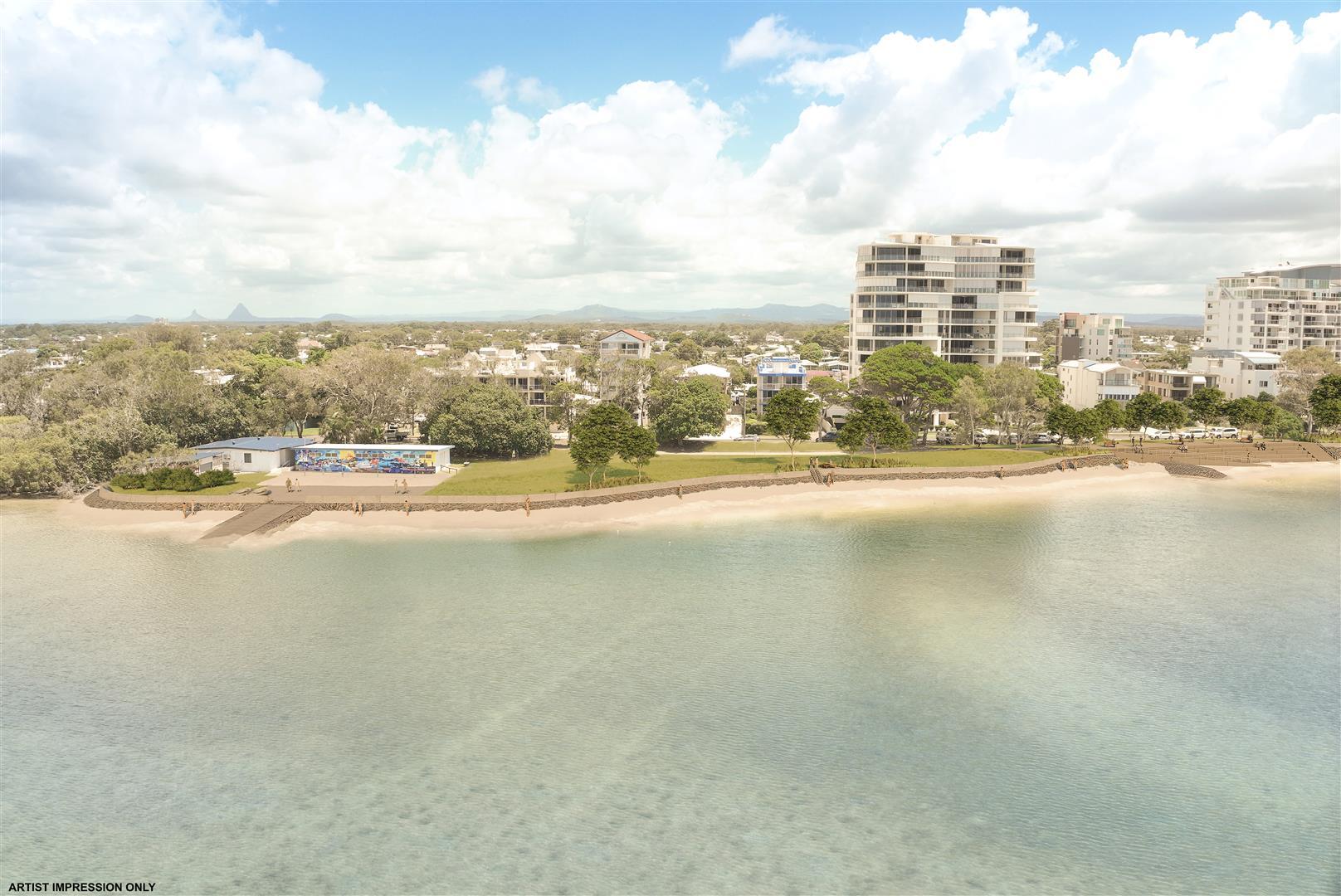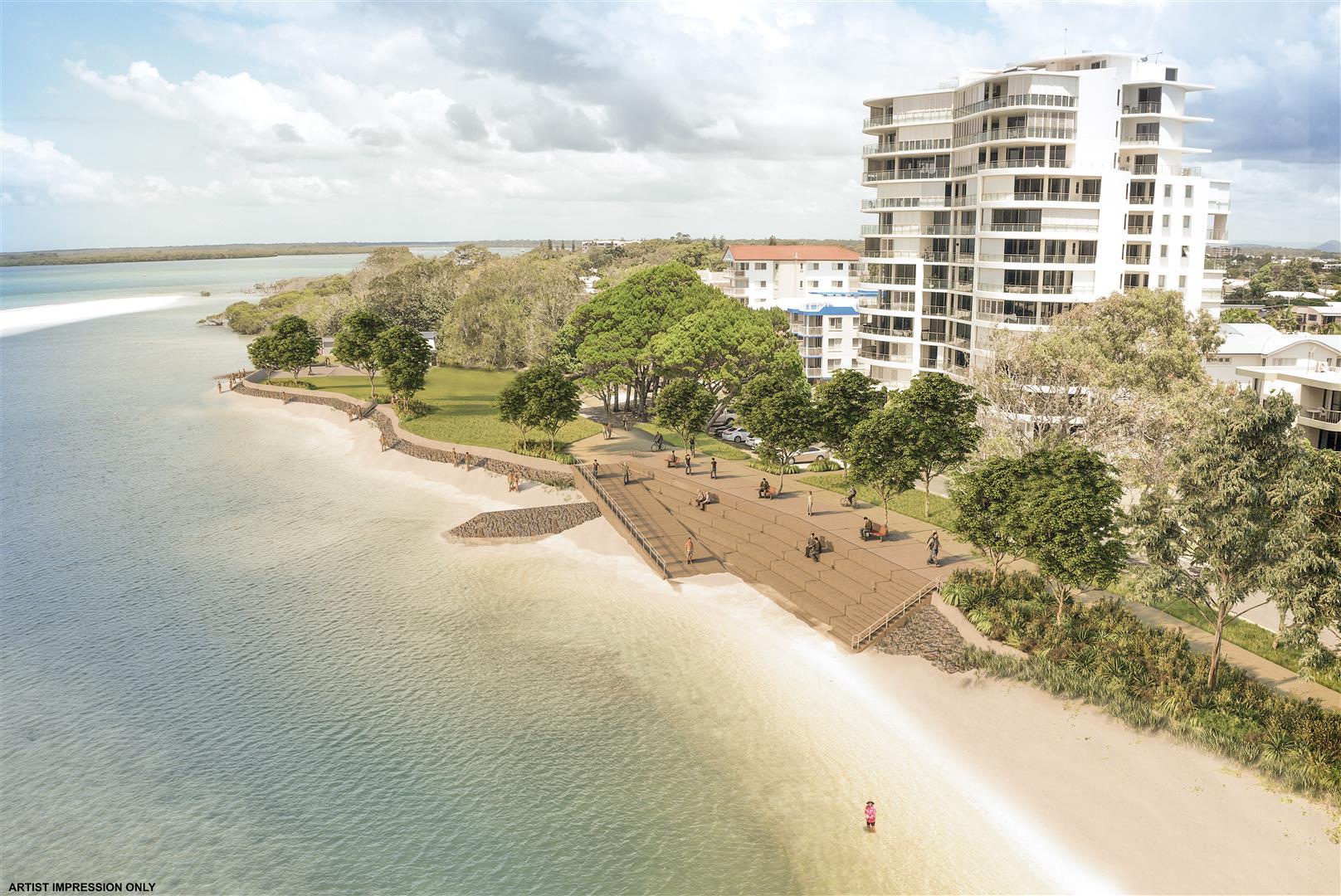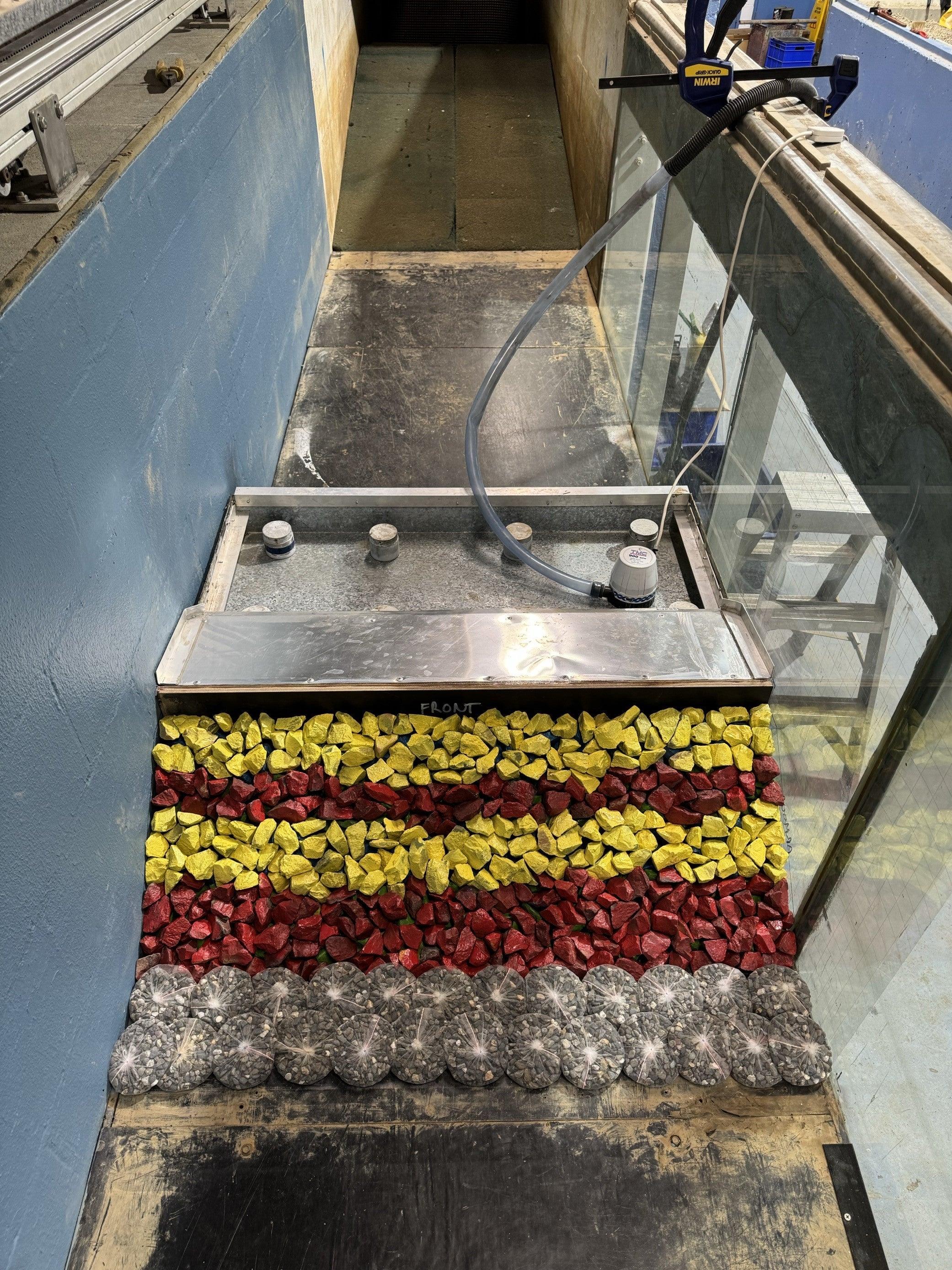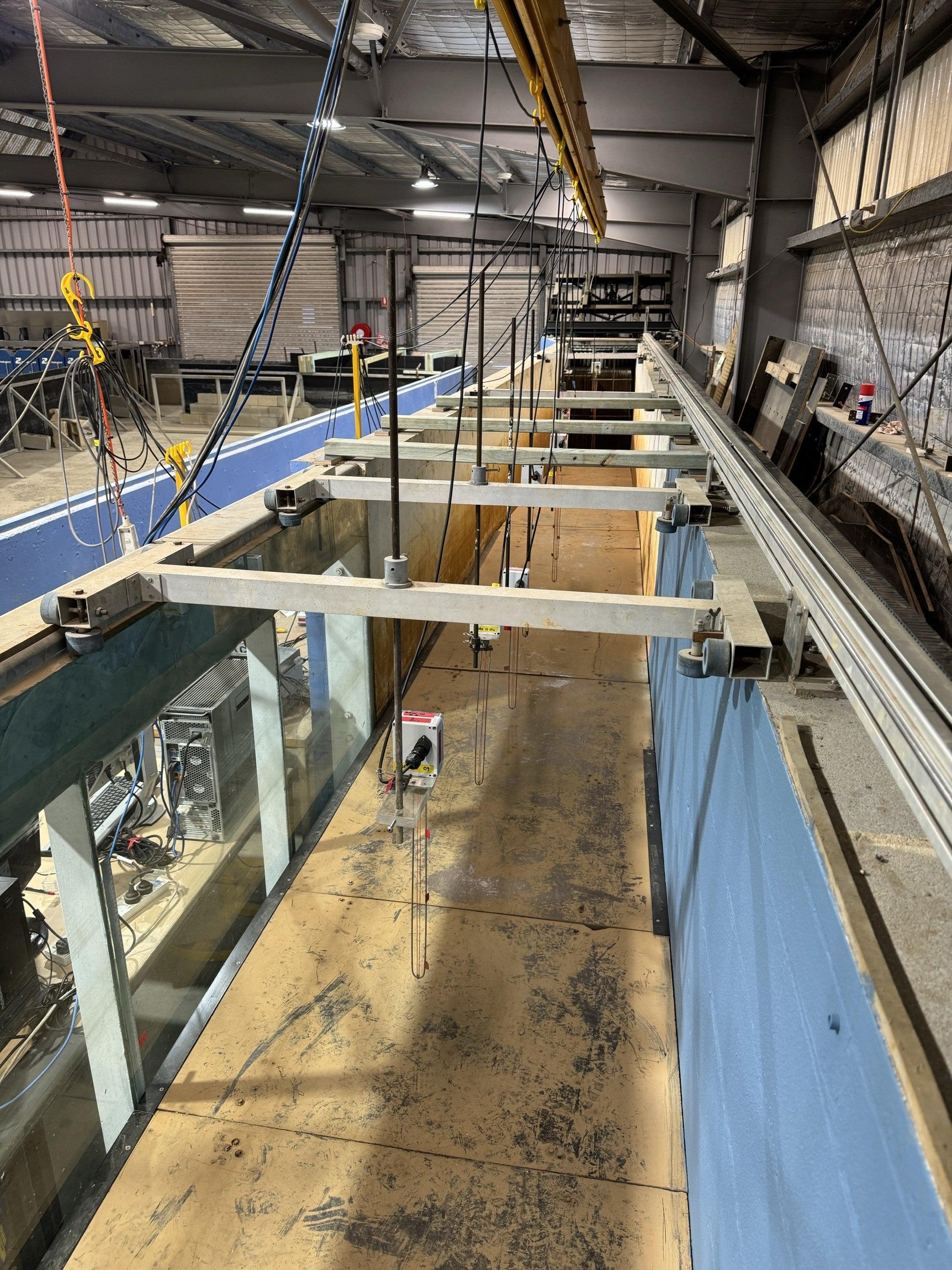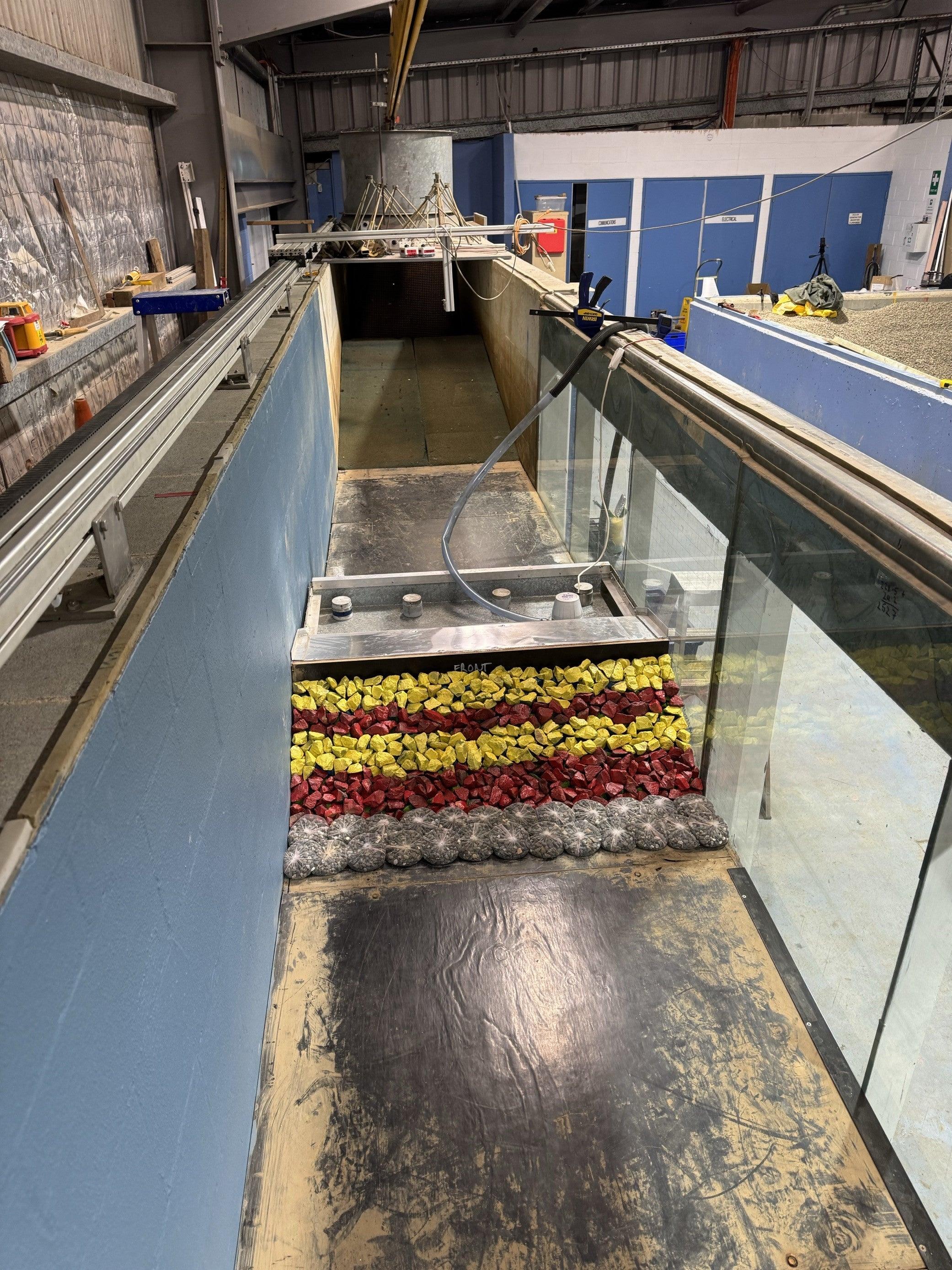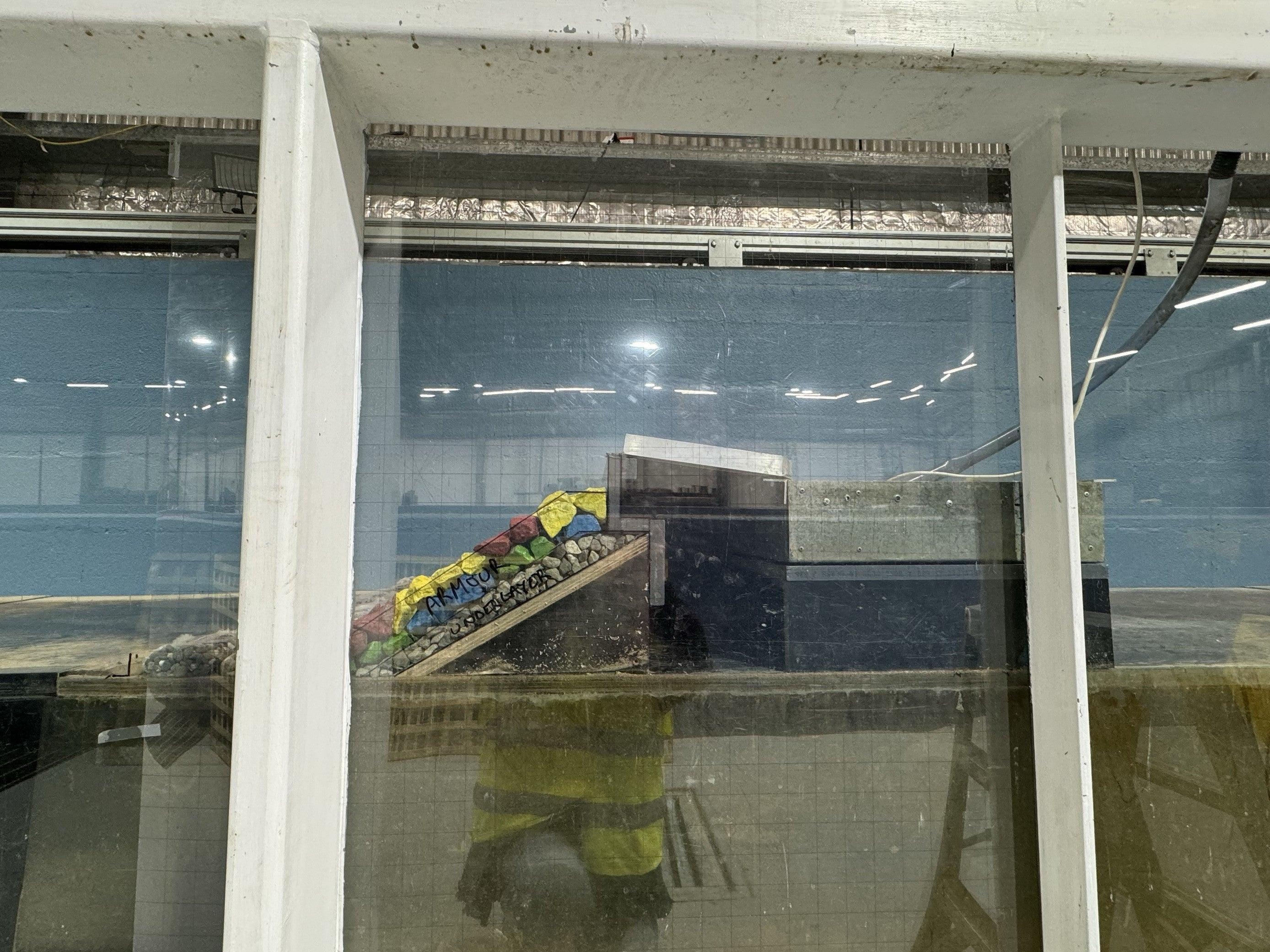Golden Beach foreshore works
Find out about works planned along the Golden Beach foreshore including TS Onslow and Diamond Head.
Work to protect the Golden Beach foreshore is underway as part of the Bribie Island breakthrough action plan. It includes upgrading seawalls, building new beach accesses, raising sections of the coastal pathway and other foreshore works.
Consultation is now open on two key coastal resilience projects in this area to protect our coastline and community from the impacts of coastal hazards and a changing climate.
We’ve developed long-term adaptation options to help protect Golden Beach and Caloundra (Bulcock Beach) from the growing impacts of coastal hazards and flooding, now and into the future.
We need your input on the long-term concept options that explore how these areas can adapt to our changing coastline. We want to keep you informed and hear your views on how well they reflect the values you've told us matter most to you.
- Visit our Have your Say website to learn more
- Attend a pop-up event to talk with the project team
- Provide your feedback in our online survey
Pop-up events:
- Saturday 29 November 2025, 8am–12pm at Military Jetty area, Golden Beach.
- Saturday 6 December 2025, 7am-11am at Fraser Park, Golden Beach.
- Wednesday 10 December 2025, 5.30pm–7.30pm at Caloundra Library (Level 2), 1 Omrah Avenue, Caloundra.
The work in this area is being delivered in sections as funding and grants allow (see map below):
- Seawall construction and foreshore works – TS Onslow to Nelson Street (construction underway).
- Seawall construction and foreshore works - between Lamerough Canal and the June Street boat ramp, Diamond Head (planning underway, construction in approximately March 2026).
- Seawall and foreshore works – Golden Beach Esplanade, between Jellicoe and Nelson Streets (complete).
- Replacement of the degraded geotextile bag groynes with rock structures at Oxley Street, Leichardt Street, Wills Avenue and Jellicoe Street (complete).
- Emergency, temporary works at Diamond Head - to address the immediate impacts of the recent breakthrough event and elevated tide levels, which have created open coast exposure, requiring urgent intervention to stabilise the area and maintain public safety (complete).
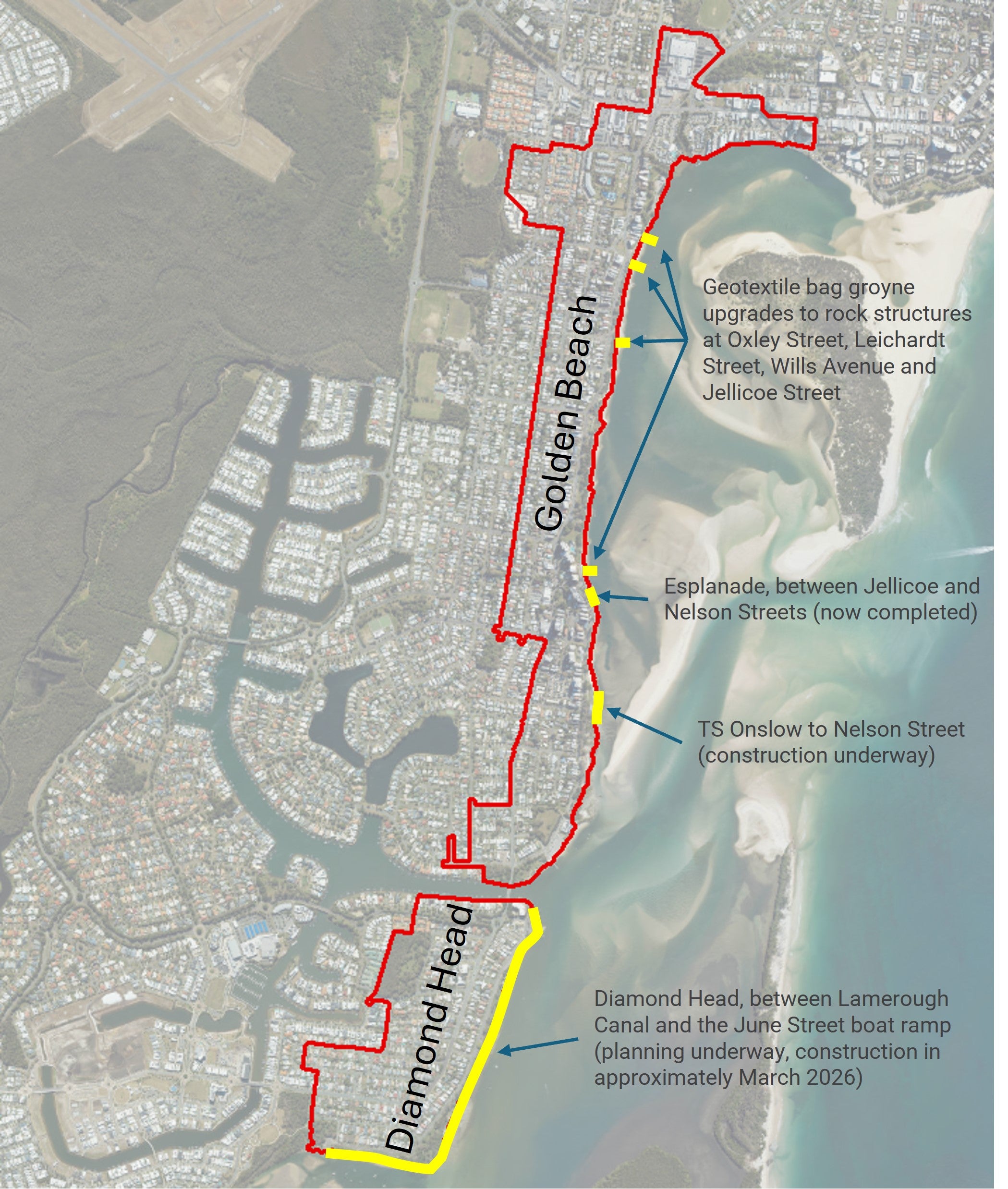
Community updates
We are committed to updating our community about the Golden Beach foreshore works.
Read through the latest Community Updates below.
Community Updates
Community Updates
- Community Update - TS Onslow early morning equipment removal - 14 November 2025
- Community Update - TS Onslow concrete pour - 10 September 2025
- Community Update - Golden Beach foreshore works - 11 August 2025
- Community Update (printable) - Golden Beach foreshore works - 11 August 2025
- Community Update - TS Onslow - 4 August 2025
- Community Update - Golden Beach foreshore works - 21 July 2025
- Community Update - TS Onslow - 17 July 2025
- Community Update (printable) - Golden Beach foreshore works update - 17 July 2025
- Community Update - TS Onslow - 17 July 2025
- Community Update - Golden Beach foreshore temporary works - 25 June 2025
- Community Update - Revetment wall repairs at Lamerough Canal entrance, Pelican Waters - 20 June 2025
- Community Update - TS Onslow seawall works underway - 18 June 2025
- Community Update - How we're working to protect the Golden Beach foreshore - 21 May 2025
- Community Update - Esplanade seawall and foreshore works completed - 17 December 2024
TS Onslow to Nelson Street, Golden Beach
Foreshore works and seawall construction
We are partnering with the Australian and Queensland governments to re-construct the seawall to protect the foreshore from Nelson Street to the TS Onslow Naval Cadets site in southern Golden Beach.
Works are now underway and are expected to be completed by early 2026, weather depending.
The foreshore was initially impacted in the extraordinary weather events of 2021 and 2022, with subsequent widening of the Bribie Island breakthrough increasing the coastal hazard risk to the site and other parts of Golden Beach.
This project will protect the valuable park, coastal pathway and road near the seawall from coastal hazards.
It will provide better access to the water, with overall beach and waterway access increasing to two new staircases and two 4-metre-wide ramps.
Work will include building a 208-metre-long rock seawall and concrete stepped wall, constructing two staircases and integrated beach access ramp with added landscaping.
We’ll also reconstruct the damaged boat ramp at the Navy Cadets site, enhance the surrounding parklands, improve beach accessibility and the coastal pathway along the Esplanade. This will also include steps to manage the material containing asbestos found on some sections of the TS Onslow site.
A seawall fit for purpose
We have received development approval and completed detailed design and testing.
A physical seawall model was built and tested at Manly Hydraulics Laboratory to optimise the design to make sure it was the most suitable size for this location.
The modelling and testing helped to confirm the seawall is designed to be fit for purpose to protect against storms and waves in this location. You can read more in the modelling and testing report.
Council is working with the successful tenderer, Australian Marine and Civil.
TS Onslow seawall 2D Physical Model testing (by Manly Hydraulics Laboratory April 2025).
What to expect next
An exclusion zone has been established around the site for public safety, with signed detours for pedestrian safety.
- Early morning concrete pours will occur intermittently from early September 2025 over the next 10 to 12 weeks.
- Pours may happen two to three mornings per week, starting around 5am and lasting a couple of hours.
- Noise disruptions may occur during this time.
- These early starts are critical to ensure the concrete sets properly and avoids defects caused by high winds and sunshine. (The earlier the better.)
- We appreciate your understanding as we carry out this important stage of construction.
Works are progressing well and are expected to be completed by early 2026 (through importantly timed work like the early morning concrete pours), weather depending.
Where we're at
- Completed: demolition and removal of old concrete structures along the foreshore, piling to bleachers, removal of temporary piling pad to bleachers, forming the toe of the southern seawall and cadets boat ramp ready for blinding and foundations for the pre-cast wall units.
- Underway: constructing concrete formwork to the bleachers prior to concrete pours, delivery and installation of pre-cast units to the seawall and boat ramp, building up the placed rock seawall from the south.
- A section of Esplanade is now one-way to safely manage access for vehicles and pedestrians (from Chill Café 89 to Onslow Street) and parking restrictions are now in place.
- You can still enjoy the coastal pathway and the beach heading north from Beach Access 319a (Chill Café 89), and access businesses nearby, and south from TS Onslow navy cadets.
Be aware there’ll be some noise from the works and when rock and materials are delivered.
A section of seawall will be a combination of placed rock and concrete wall as this design can be adapted in the future by adding extra layers of rock or higher walls. New stairs will provide beach access from the park over the seawall.
The northern section will feature sandstone-coloured concrete benches (bleachers) with a 4-metre-wide beach access ramp, which will provide excellent beach accessibility for our community. The benches are like giant stairs and are designed to be used as a gathering space with wide open seating for many people.
This is a complex project which requires careful consideration of the potential future impacts of the tidal breakthrough at Bribie Island and in the Pumicestone Passage.
Material containing asbestos was found in 2023 and a cleanup and remediation project was initiated.
This project also aims to further prevent any asbestos from entering the passage, ensuring public safety is maintained.
The TS Onslow site is owned by the Queensland Government and leased by the Navy Cadets. Sunshine Coast Council is leading the project team and working closely with both parties to progress this critical reconstruction scheme.
Sunshine Coast Council would like to acknowledge the funding allocation being jointly funded by the Australian and Queensland Governments under the Disaster Recovery Funding Arrangements. The Department of Sport, Racing and Olympic and Paralympic Games are administering the disaster funding.
Keep up to date
Subscribe to receive emailed updates on the Golden Beach foreshore works.
Why is this work needed?
Why is this work needed?
Our actions focus on protecting Golden Beach foreshore as well as the important community areas like roads, parks, and playgrounds.
The foreshore was initially impacted in the extraordinary weather events of 2021 and 2022.
Conditions at the site deteriorated quickly and erosion along the area subsequently followed due to a lack of protection along this foreshore.
Subsequent widening of the Bribie Island breakthrough has also increased the risk to the TS Onslow site and other parts of Golden Beach to coastal hazards.
Material containing asbestos was also found in 2023 and a cleanup and remediation project was initiated.
This project aims to further prevent any asbestos from entering the passage, ensuring public safety is maintained.
A seawall will help to “cap” this material and also prevent erosion along the foreshore.
It also aims to reconstruct the damaged boat ramp at the Navy Cadets site and improve the parklands and beach accessibility.
Surrounding infrastructure such as roads, electricity water and sewerage infrastructure will also be protected by building a new seawall.
What is the scope of this project?
What is the scope of this project?
As part of this project, we plan to:
- construct a new 170-metre seawall from the northern extent of the site down to the mangroves south of the site
- construct a new 4-metre-wide pedestrian and vehicle ramp at the northern end of the site with terraces to allow for seating and viewing
- reconstruct the damaged boat ramp at the Navy Cadets site along with minor landscaping and improvements to the open space
- retain and preserve the beach area, and push sand back over the base of the new seawall, ramps and stairs
- remove the old foreshore protection structures in front of the TS Onslow site, such as the large concrete blocks
- upgrade a stormwater pipe within the small geosynthetic bag groyne to a large rock type structure, fitted with a duckbill backflow device, to prevent sand blockages and nuisance flooding in future years.
When will construction begin?
When will construction begin?
Work is now underway and is expected to be completed by December 31, 2025, weather permitting.
We will provide more information about the construction schedule and what this means for you soon.
What can I expect during works?
What can I expect during works?
Initially there will be removal of the old concrete blocks and boat ramp along with clearing some vegetation that is in the seawall footprint.
Following this expect large machines onsite to build the seawall and truck movements to bring in materials.
Pile drilling will also be conducted around the benches area.
Works are expected to take place 6.30am-6pm Monday to Friday.
In occasional circumstances slightly earlier or longer working times may be required along with occasional Saturday work.
We aim to keep this practice to a minimum and allow this only when necessary.
How is the work being funded?
How is the work being funded?
Sunshine Coast Council would like to acknowledge the funding allocation being jointly funded by the Australian and Queensland Governments under the Disaster Recovery Funding Arrangements.
The Department of Sport, Racing and Olympic and Paralympic Games are administering the disaster funding.
Australian Marine and Civil (AMC) was the successful tenderer.
Who designed the project?
Who designed the project?
Royal Haskoning DHV was the lead consultant for design and permits. Manly Hydraulics Laboratories (MHL) was engaged to perform physical modelling to test for wave overtopping and structure damage on the proposed design.
Will I still be able to use the beach?
Will I still be able to use the beach?
The beach in front of BA319a will remain open, with signed detours in place for pedestrian safety where required.
There will be an exclusion zone around the site to keep members of the public safe.
A new beach staircase will be built at the centre of the TS Onslow site.
Overall beach/waterway access has increased to two new staircases and two 4-metre-wide ramps.
Can I still access the local businesses and use the coastal path along Golden Beach during construction?
Can I still access the local businesses and use the coastal path along Golden Beach during construction?
The area will remain open and accessible during construction.
However, some minor redirections will be required.
For your own safety, please stay clear of any works and follow the direction of signage or workers on site.
Will I still be able to park close to the beach at Golden Beach during construction?
Will I still be able to park close to the beach at Golden Beach during construction?
Some parking will be affected during works so we can build the wall safely. We will do our best to minimise these impacts.
What will the new seawall look like?
What will the new seawall look like?
Part of the new seawall will be a combination of placed rock and concrete walls. This will form the majority of the seawall length, as this design is easily adaptable in the future by adding extra layers of rock or higher walls.
The northern section of the seawall will be built out of sandstone-coloured concrete benches (large stairs) with a 4-metre-wide beach access ramp. This will make for an area that provides high amenity and excellent beach accessibility.
The existing geobag groyne and stormwater pipe will also be upgraded to a rock structure with a backflow device to lessen the risk of upstream flooding in the future.
A physical seawall model was also built and tested at Manly Hydraulics Laboratory to confirm its design parameters were fit for purpose and its final size and height were optimised to reduce cost and material usage.
Some of the top of the concrete walls will be visible from the parkland across the seawall length.
The height of the visible wall will vary along the foreshore but is important to prevent wave overtopping.
How will the area look different from what it is now?
How will the area look different from what it is now?
The site will have a seawall that connects from the Nelson Street rock wall to the boundary of the TS Onslow site.
The seawall will be higher than the current ground level to account for the changes to the tidal prism in the Passage.
The trees along the foreshore will have to be removed to build the seawall, however some trees will be planted in the park to offset this.
The seawall will have two accesses: one ramp to help improve access for unpowered watercraft and a staircase.
After constructing the seawall, when permits allow, we will nourish the area if required to ensure the beach area is still useable for all Golden Beach residents and visitors to enjoy.
What are the design parameters?
What are the design parameters?
The seawall has been designed to allow adaptation into the future and accounts for a 50-year design life based on sea level rise projections for 2074 and beyond.
It also takes into account significant storm events, as per the Australian standards.
A physical model was constructed in Manly Hydraulics Laboratories (MHL) in Sydney using a wave flume to test the design against wave overtopping and structural damage.
As a result of rigorous testing in the wave flume, MHL were also able to verify the design parameters and will help inform future works along Golden Beach.
Previous plans and strategies activities that also fed into the design:
How will the changes to the Pumicestone Passage be incorporated?
How will the changes to the Pumicestone Passage be incorporated?
The project design has factored in a 300mm increase to the tidal range in the Passage caused by the Bribie Island breakthrough, along with projected sea level rise of 0.5m by 2070.
Does Council have all statutory approvals?
Does Council have all statutory approvals?
Yes, we have approval to do the work under OPW24/0383 for the council component, 2411-43260 SRA for the Queensland Government response and Marine Parks is: P-MPP-100758407.
Will there still be sandy beaches?
Will there still be sandy beaches?
Yes, we plan to pull sand back over the new seawall where possible.
Minor dredging work may also be used to top up the new seawall during construction.
What is Council doing about the sand over the coastal pathway?
What is Council doing about the sand over the coastal pathway?
We remain vigilant in responding to the impacts of the regular tidal inundation.
Due to the nature of tidal inundation, sand and debris will often be present within the open space and Council is attending as resources permit. This includes removing sand from the much-loved coastal pathway so our community can continue to enjoy beautiful recreational experiences in this amazing part of the Sunshine Coast.
Should you notice any hazards please report to Council on 5475 7272 or via the SCC app.
What is the woody debris along the shoreline?
What is the woody debris along the shoreline?
We know dead plants and wood has washed up along the shoreline.
This woody debris is classified as a marine plant and is protected under the Fisheries Act 1994.
Council can’t remove it from the beaches unless it is determined as an immediate safety risk to the public.
Did you know this woody debris is actually an important part of the coastal environment? It acts to protect the coastline, hold sand in place and help the beach repair quicker.
What is happening with the sand dredging at Golden Beach?
What is happening with the sand dredging at Golden Beach?
We are starting our ongoing annual dredging and nourishment campaign in the Pumicestone Passage, which started Monday 28 April.
This campaign will run until mid-June and provide operational nourishment to beaches near the Powerboat Club, and on Golden Beach and Diamond Head to mitigate erosion as per our strategies outlined in our Shoreline Erosion Management Plan.
For more information visit Council’s website.
What’s happening with the Diamond Head seawall?
What’s happening with the Diamond Head seawall?
We have contracted coastal engineering firm JB Pacific to complete detailed design work for coastal protection works and drainage improvements at Diamond Head.
The new seawall design will account for fragmentation of Bribie Island and a 2075 planning horizon with 0.5m sea level rise. Future design scenarios will also be considered as part of this.
The scope of construction works is to complete sections along the foreshore as funding permits and to replace or relocate further landward elements such as benches, shelters, fish cleaning tables and the coastal pathway which are currently at risk from inundation.
Design and permits are expected to be completed by late 2025 and the first stage of works is expected to start around mid to late March 2026.
What's happening with the Coastal Hazard Adaptation Precinct Planning (CHAPP) investigations?
What's happening with the Coastal Hazard Adaptation Precinct Planning (CHAPP) investigations?
In response to the Coastal Hazard Adaptation Strategy (CHAS) we are carefully investigating how to manage important coastal areas through Coastal Hazard Adaptation Precinct Planning (CHAPP) investigations at Golden Beach and Caloundra (Bulcock Beach).
As part of these investigations, from 28 October to 25 November 2024 we invited our community to provide input on coastal spaces, how they use them, their values, and their ideas on how they might be adapted against coastal hazards and flooding. Participants contributed their thoughts via an online submission form, at workshops and pop-up events, and via email.
To find out more about the engagement outcomes, including some of the key concerns and ideas raised by our community for Golden Beach and Caloundra (Bulcock Beach), visit Council’s Have your Say website or view the engagement summary.
Who is responsible for managing and monitoring Bribie Island?
Who is responsible for managing and monitoring Bribie Island?
Bribie Island is part of a National Park, and Pumicestone Passage lies within the Moreton Bay Marine Park, both managed by the State Government.
The Queensland Government is responsible for managing and monitoring Bribie Island. Sunshine Coast Council offers support to the Queensland Government as needed.
The Queensland Government is leading the Bribie Island erosion and breakthrough review because they manage Bribie Island. Please refer to their website for more information.
Part 1: Desktop review
Part 2: Immediate recommendations
Part 3: Long-term recommendations have been published and can be viewed here: Bribie Island erosion and breakthrough review | State Development, Infrastructure and Planning.
View Sunshine Coast Council’s first submission to the Bribie Island erosion and breakthrough review [205.4KB].
Other ways we are continuing to support the review:
- being part of the technical review process providing background information
- providing findings of the Golden Beach Coastal Hazard Adaptation Project to the review including feedback provided by the community about the values of the area
- contributing vital local knowledge and being on hand to offer more support if it’s needed.
Emergency package for Bribie Island dredging works
The Queensland Government has announced that a package of emergency works is being prioritised for delivery ahead of the upcoming storm season.
This will be managed by the Office of the Coordinator General.
Further information can be found here: Emergency package for Bribie dredging works fast-tracked - Ministerial Media Statements.
Lamerough Canal and June Street boat ramp, Diamond Head
Seawall construction and foreshore works
We’re working hard to protect and preserve the beautiful foreshore along Diamond Head at Golden Beach – so it stays just the way you know and love it.
In 2016, as part of the Bribie Island Breakthrough Action Plan, we completed designs and obtained tidal works approval for a future seawall permit: OPW160318.
Following severe storm events since 2022 and rapid changes to Bribie Island, Council resolved to redesign this historical seawall design based on new tidal data, climate change projections, Coastal Hazard Adaptation Precinct Planning (CHAPP) principles and observations following two breakthroughs on Bribie Island.
The current commissioned design work includes designing a revised seawall which is also adaptable for future conditions. We’ll also perform physical modelling on the three different seawall types. We’ll also seek to renew the current seawall permit with the Queensland Government.
This work follows damage caused by storm surges, high tides, and erosion linked to the Bribie Island breakthrough* and recent severe weather events.
*It's important to note that the Queensland Government manages Bribie Island.
Planning a seawall at Diamond Head
We have contracted coastal engineering firm JB Pacific to complete detailed design work for coastal protection works and drainage improvements at Diamond Head.
This seawall will protect the area between Lamerough Canal and the June Street boat ramp, Diamond Head. It’s part of the Bribie Island Breakthrough Action Plan.
The new seawall will include stormwater renewals, sand renourishment and improved beach access, including new stairs and a multi-use ramp.
The project also aims to make improvements to the foreshore area behind the seawall. This will include minor upgrades and also relocating multiple assets such as the Coastal Pathway, benches and tables, barbecues, park shade trees, shelters, and linking pathways, to more suitable locations.
Have your say
We’re progressing two key coastal resilience projects in these areas to protect our coastline and community from the impacts of coastal hazards and a changing climate – and you’re invited to get involved.
Community consultation is open from Monday 17 November to Friday 12 December 2025.
Have your say on:
- The long-term adaptation options for Golden Beach and Caloundra (Bulcock Beach). Tell us how well they reflect the values that you’ve told us matter most to you.
- Review the artist impressions for the foreshore improvements behind the new Diamond Head seawall and share what you think. We want to ensure the area continues to be a place our community can enjoy for years to come. The artist impressions suggest possible locations of a realigned and wider coastal pathway, beach access points, parkland shade trees, park furniture, barbecues, shelters and linking pathways.
Please note: for constructability, compliance with design standards, safety and environmental reasons, some parts of the project – such as the seawall design and stormwater renewals – must follow expert engineering advice. They will not form part of the discussion for community feedback.
Council officers will be able to discuss the seawall design at the community consultation pop-ups.
Visit Have your Say Sunshine Coast to share your thoughts and find engagement opportunities before 12 December 2025.
Your voice matters – together, we can build a more resilient Sunshine Coast that protects what we love while adapting for the future.
What will be built
The Diamond Head seawall and foreshore improvements project will include:
- construction of a seawall, to be built in sections as funding permits
- stormwater system renewals
- sand renourishment along the foreshore
- new beach accesses and mixed-use ramp
- refurbished or replaced open space features like benches, shelters, fish cleaning tables, and the coastal pathway
- an accessible groyne near the old boat ramp adjacent to Military Jetty that also features nature-based elements.
Why this project is needed
The seawall will be designed with future sea level rise in mind - up to 0.5 metres by the year 2075.
Council identified key areas requiring intervention through the Bribie Island Breakthrough report (BIB). The endorsed Coastal Hazard Adaptation Strategy (CHAS) and the latest Shoreline Erosion Management Plan (SEMP) have also recommended multiple actions to be undertaken along the entire Golden Beach Foreshore over the next 5-75 years.
We’ve also developed long-term adaptation options as part of the Coastal Hazard Adaptation Precinct Planning (CHAPP) to reduce the risk of coastal hazards and flooding from Bulcock Beach to Bells Creek.
Many parts of Diamond Head are low-lying and vulnerable to coastal hazards and sea level rise. Recent events – including Tropical Cyclone Alfred – have caused tidal changes, stormwater flooding, beach recession, and wave action that damaged infrastructure and open space.
To protect the public realm and make it more resilient to future climate impacts, we need to build a higher seawall and improve the stormwater network.
The seawall may be up to 1.4 metres higher in some sections, but on average it will be about 1 metre high – roughly waist height for most adults.
Design and planning are currently underway.
Scope of work
To deliver this important project, we’ve partnered with JB Pacific – experts in coastal engineering, science, and modelling. They’re designing a revised seawall and upgraded stormwater network based on current and future conditions along the stretch from Lamerough Canal to the June Street boat ramp.
The seawall will span 1.5 kilometres and feature three distinct wall types, each tailored to suit the changing conditions along the foreshore.
1. Placed rock seawall with raised crown wall
- Similar to the TS Onslow seawall.
- Reflects waves back toward the ocean.
- Cost-effective, strong coastal protection, easy to construct, and highly adaptable.
2. Terraced seawall
- Two terraced walls planned at key locations.
- Designed for excellent pedestrian access and better use of the foreshore.
- Robust, adaptable, great for community use – but more expensive to build.
3. Sheetpile Wall
- Vertical wall for areas where excavation must be minimised or other wall types aren’t practical.
- Planned for the southern end of Diamond Head, where geotechnical studies found high levels of Acid Sulphate Soil.
Funding
The Diamond Head seawall received funding through Round 4 of the QCoast2100 program. This is delivered in partnership with LGAQ and is jointly funded by the Australian and Queensland Governments under efficiencies realised through the Disaster Recovery Funding Arrangements (DRFA), aimed at supporting priority disaster resilience and mitigation projects across Queensland.
Whilst the QCoast2100 funding is extremely valuable to assist Council in protecting the foreshore along Diamond Head, further funding is still required. We will be submitting the project for further funding considerations through both the jointly funded Commonwealth-State DRFA, as part of exceptional circumstances packages agreed in the wake of Tropical Cyclone Alfred, and Round 4 of the Disaster Ready Fund (DRF).
Timeline
- Design and permits: finished by early 2026
- Construction starts: mid-2026
Bribie Island emergency works
To enhance protection of Golden Beach and the Pumicestone Passage during the upcoming storm season, the Queensland Government and their contractors are undertaking emergency dredging works to address the southern breakthroughs and buffer Bribie Island.
The works are informed by independent expert recommendations and community feedback gathered during recent consultation.
Works at Woorim Park, Golden Beach
To support delivery of these essential works a temporary work site compound has been established in the northern section of Woorim Park (nearest Drake Street and The Esplanade), Golden Beach.
This will require temporary, intermittent shared road and pathway closures in the area. Traffic control will be place.
Public access to park amenities and the remaining areas of Woorim Park will be maintained, and every effort will be made to minimise disruption to park visitors, the local community, and nearby businesses throughout the duration of the project.
It is anticipated that the site compound will remain in place until the end of the upcoming storm season (end April 2026) to support the emergency works and the ongoing monitoring and maintenance activities.
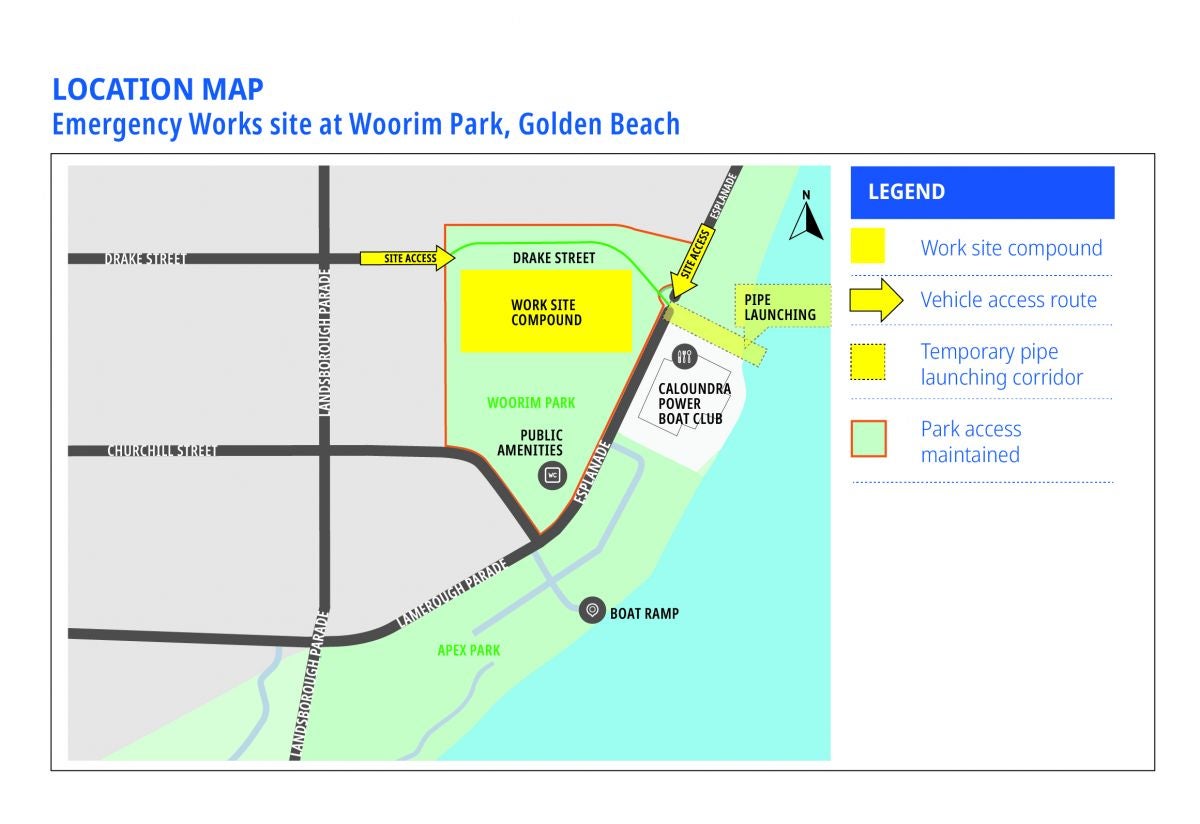
Looking for alternative off-leash dog parks?
Visit Sunshine Coast Council's dog parks.
For more information on the Bribie Island emergency works:
Visit the Coordinator-General's webpage: Bribie Island emergency works.
Contact the Bribie Island Emergency Works project team:
E: [email protected]
T: 1800 316 378 (Monday to Friday, 8.30am – 5pm).
Independent review of Bribie Island Breakthrough
The Queensland Government is leading the Bribie Island erosion and breakthrough review because they manage Bribie Island. Please refer to their website for more information.
Part 1: Desktop review, Part 2: Immediate recommendations, Part 3: Long-term recommendations and Part 4: Final Report have been published and can be viewed here: Bribie Island erosion and breakthrough review | State Development, Infrastructure and Planning.
View Sunshine Coast Council’s first submission to the Bribie Island erosion and breakthrough review [205.4KB].
Council supported the review by:
- being part of the technical review process providing background information
- providing findings of the Golden Beach Coastal Hazard Adaptation Project to the review including feedback provided by the community about the values of the area
- contributing vital local knowledge and being on hand to offer more support if it’s needed.
Temporary fixes before construction
This area can get covered with sand and debris from the tide. Council is aware. We visit the area monthly to tidy it up. If you see any urgent issues, please contact Council.
To help protect the area before the seawall is built, we completed a range of temporary works which form part of the broader strategic approach.
These temporary measures were designed to strengthen the area while longer-term solutions are planned.
We appreciate our community’s patience while these important works were carried out. Keeping Golden Beach safe and enjoyable for everyone is our top priority.
- Building a sandstone wall: We have completed installing a sandstone retaining wall which can be used as seating at the Military Jetty shelter, and additional temporary sandstone block walls at Military Jetty and the Military Jetty boat ramps. We extended the sandstone block wall at hotspots further south to provide better temporary protection.
- Pathway realignments between Military Jetty and Diamond Head: In some locations the combination of sandstone blocks to protect from waves and sand migration is not appropriate, so to keep the coastal pathway safe and accessible, we shifted its route slightly.
- Placing rocks: Large rocks were placed along the most eroded sections of the foreshore to help stabilise the area.
- Apex Park: We are aware this area can get covered with sand and debris from the tide. We visit the area monthly to tidy it up. If you see any urgent issues, please report to Council on 5475 7272, via the SCC app, or contact us online.
- Apex Park: Building a sandstone block wall would not be effective in this location, so we have been working on an engineering design to extend the geotextile sandbag wall to connect to the existing rock wall at Lamerough Canal entrance. We hope to start construction for this later this year and will keep you updated.
This is part of the community relief fund package administered by the Queensland Reconstruction Authority (QRA). We anticipate reusing these blocks in the final seawall reconstruction at a later date.
Other completed works:
We also removed the sand build up and replaced the ageing picnic table with a new, modern picnic setting. Although these works haven’t completely resolved the issues of the area, as we continuously inspect and remove sand, it will help slow the sand build up. Thank you for your patience.
We also completed works to repair the existing revetment wall at the entrance to Lamerough Canal (Pelican Waters). The work involved adding rock to strengthen the wall structure.
We have extended the existing stormwater discharges on the northern side of the Power Boat Club and have completed the second extension of the existing stormwater discharge at the Military Jetty carpark near 126 the Esplanade, Golden Beach.
We’ve extended these existing stormwater pipes to help them work properly again. Over time, tidal movements in the passage have caused sand to build up and block the stormwater outlets, stopping water from draining as it should.
By extending the pipes further out, stormwater and salt water can now flow out more easily, helping to reduce flooding on nearby roads and parklands.
While big tides may still bring salt water onto the roadway verge and parklands, these upgrades will improve overall drainage. We’ll continue to monitor the sites to make sure everything is working as expected.
Keep up to date
Esplanade, Golden Beach - between Jellicoe and Nelson Streets
Seawall and foreshore works - complete
We have completed the reconstruction of a new seawall with adaptation to future climate hazards in mind, between Jellicoe and Nelson Streets, Golden Beach.
This new seawall will help safeguard the parkland and footpath from damage caused by storm surges, sea level rise and coastal erosion.
This project is one of the ways Council is carefully managing our coastline to protect and preserve it now and into the future.
Summary
The project included:
- reconstructing and raising approximately 80 linear metres of the existing seawall using grouted rock
- installing special concrete tiles to create a ‘living seawall’ with habitat for sea creatures
- reconstructing and upgrading the coastal footpath with matching hardwood and stainless-steel handrail
- a new stairway to access the foreshore
- reinstating the barbecue shelter, benches and a wheelchair accessible binoculars station
- reinstating the parkland and planting.
A 'living seawall'
The project was part of a trial with the University of the Sunshine Coast and the Local Government Association of Queensland (LGAQ) to install and monitor a ‘living seawall’.
A $300,000 grant was provided to Council from the LGAQ towards building the new raised seawall and including the living seawall elements.
We attached 100 tiles to the side of the Golden Beach seawall to create an enticing home for sea creatures.
Because the constructed seawall surface is relatively smooth, the aim of the ‘living seawall’ tiles is to help mimic the natural coastal habitat, encouraging seaweed to grow and creating a home for fish and other marine life.
The Golden Beach seawall and foreshore project was completed with the support of the Queensland Government’s LGAQ QCoast2100 Program in association with Sunshine Coast Council.
Keep up to date
Subscribe to receive emailed updates on the Golden Beach foreshore works.

